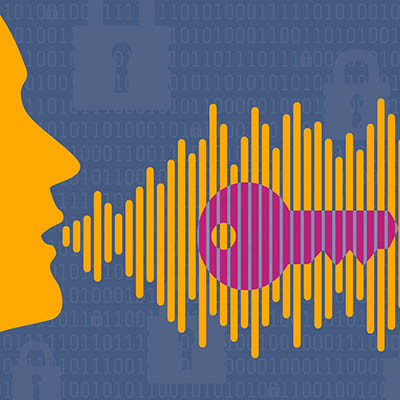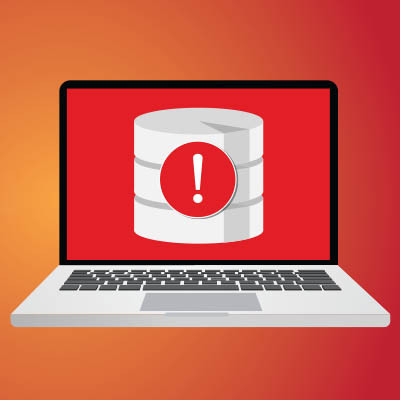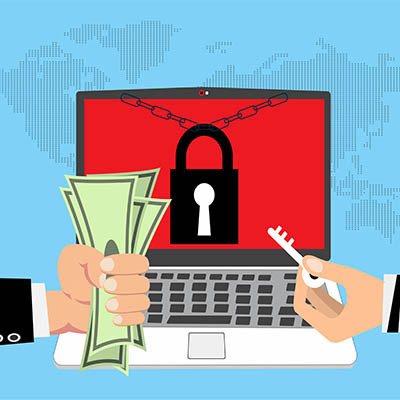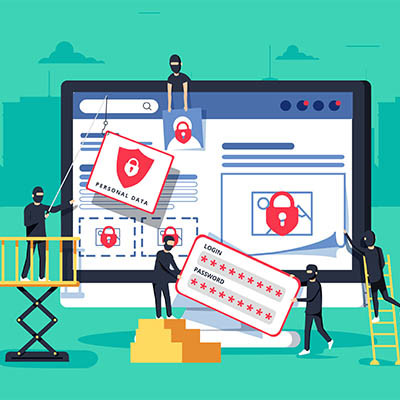JS Business Solutions Blog
Phishing attacks are nothing new in the business world, and they will almost certainly become more prevalent as time passes. Unfortunately, phishing attacks have adapted their practices to get around advancements in security technology, so businesses must work extra hard to spread awareness of phishing to their employees and train them appropriately.
Network security is a constant problem for many organizations, and it’s mostly because of the many advanced threats that make their homes on the Internet. Businesses who don’t have dedicated IT resources or security professionals do not know how to handle network security or appropriately protect their assets. Let’s examine some of the more common threats that your business should be prepared to address.
If you look at all of the security-related headlines from the past year, what do you think the biggest trend is? Perhaps it was the plethora of large-scale ransomware campaigns that struck both individuals and businesses in spades. Even now, ransomware continues to make headlines by changing its tactics, with one of the more recent ones being in regards to fake ransomware.
When it comes to software solutions, many companies don’t have as much freedom as they might like to pick and choose the highest quality solutions available. Some companies might even opt to take advantage of free, open-source software simply because it is the best option that fits their price point. While there are benefits to open-source software, we want to encourage all users to also consider the dangers involved with using it.
Despite most security professionals advocating against making ransomware payments, according to a study by Mimecast titled “The State of Ransomware Readiness,” the United States has the highest average payment for ransomware out of the entire world at more than $6 million per victim. This number is shockingly high, as is the amount of people who are still paying the ransom.
Even the best employees will encounter situations where they might accidentally put your organization at risk due to a phishing attack. What are some of the telltale signs of a phishing scam and how can you tell when you need to be cautious? The subject lines of phishing emails can be indicative of their threat level. Let’s take a look.
In certain industries that are steeped in tradition, it can often be challenging to meet the stringent security requirements in order to keep up with modern threats. Take, for example, the modern law firm. Just how does a law firm go about securing its data and technology, and what must be considered when implementing security solutions for these types of organizations?
With so many workers performing tasks remotely, it’s no small wonder that authentication is one of the major points of discussion this year. How can you be sure that your company is doing all it can to verify a user’s identity before they access important information on your infrastructure? One such way you can do it is by using voice-based authentication.
Hackers and scammers are always trying to turn a profit on businesses just like yours, and you might be surprised by some of their ingenuity. One such way that some hackers choose to make a profit is by twisting the “as a service” business model into something that is particularly dangerous. Even Microsoft has gone on record and called out a particular group of Phishing-as-a-Service providers as a problem.
Believe it or not, someone can actually purchase access to your organization’s network under the right circumstances. This is the unfortunate reality that we live in, where the commoditization of data and network access has become a real problem. According to a study from KELA, hackers can sell access to compromised networks for a pittance compared to the amount of work you have invested in building your business. Therefore, you must do everything in your power to protect your network and prevent this from happening.
The term firewall is not a new one, and it’s not as old of a term as you might think. Before it became commonplace in the computing environment, it was first introduced to the world in 1983 when it was used in a movie titled WarGames. Nowadays, it is used mostly in regard to network security. Let’s take a look at what a firewall does and what the different types of firewalls do.
Real cybersecurity preparedness is, like most things in a business, a team effort. Everyone needs to be aware of the best practices involved in cybersecurity. Naturally, this will involve training. In the interest of making sure this training is as effective as it needs to be, we’ve assembled a few best practices to keep in mind as you design a curriculum.
Virtual private networks have become integral to the safety of both businesses and even individual users, but we want to use today’s blog to clear up some of the misconceptions about what a VPN can do and what a VPN cannot do. You’ll find this information helpful for keeping your business as secure as can be.
With every new day comes a new data breach that exposes the personal data of countless people. The most recent in this troubling trend is the LinkedIn data breach, an event that exposed 700 million profiles and led them to be put on sale on a hackers forum. LinkedIn denies the data breach, but how much truth is in this statement? Let’s take a closer look.
A new ransomware attack has surfaced, this time mostly targeting IT companies and their clients. The attack is specifically targeting the Kaseya platform. Kaseya is management software that many IT companies use to remotely manage and support technology. The attack in question attacked Kaseya’s supply chain through a vulnerability in its VSA software; this attack is notable because of how it targeted the supply chain, not only striking at the vendor’s clients—notably IT companies—but also their customers. Basically, this attack had a trickle-down effect that is causing widespread chaos for a massive number of businesses.
Ransomware has taken over the security industry, as we are sure you have seen from the endless headlines associated with it. All business owners must remain cognizant of the dangers that ransomware represents. A new study has found that organizations infected by ransomware that wind up paying the ransom are not necessarily better off--in fact, paying the ransom could have disastrous consequences.
Hackers have made some nefarious choices over the past several months, many of which involve using the COVID-19 pandemic to spread their influence and steal data through the use of phishing attacks. Let’s explore how these cybercriminals have leveraged a global disaster to their benefit and some ways that you can keep your business secure.






















